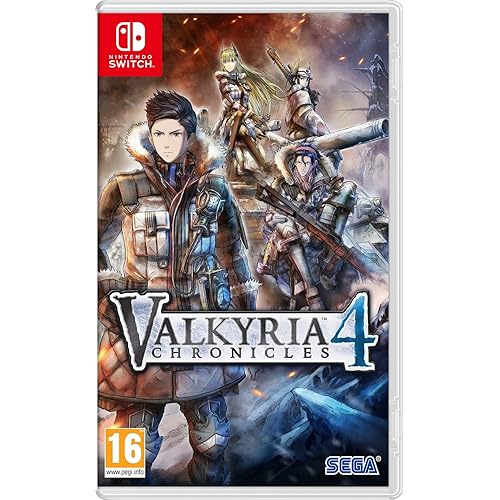




Buy Now, Pay Later
- – 6-month term
- – No impact on credit
- – Instant approval decision
- – Secure and straightforward checkout
Ready to go? Add this product to your cart and select a plan during checkout.
Payment plans are offered through our trusted finance partners Klarna, Affirm, Afterpay, Apple Pay, and PayTomorrow. No-credit-needed leasing options through Acima may also be available at checkout.
Learn more about financing & leasing here.
This item is eligible for return within 30 days of receipt
To qualify for a full refund, items must be returned in their original, unused condition. If an item is returned in a used, damaged, or materially different state, you may be granted a partial refund.
To initiate a return, please visit our Returns Center.
View our full returns policy here.
Recently Viewed
Features
- Chronologically the sixth installment in the Persona series, Persona 4 is a suspenseful countryside murder mystery with multiple twists and turns in the plot that will have you guessing all the way to the end.
- Every copy of Persona 4 is a special two-disc set including the game and a soundtrack CD, featuring music from acclaimed composer Shoji Meguro.
- Gameplay and style are similar to Persona 3, but there are plenty of new twists and additions.
- Unprecedented team control with emphasis on developing bonds in the fight to solve mysterious murders.
- Using Mayonaka TV, you can phase into the television set and enter a shadowy world.
Description
"Shin Megami Tensei: Persona 4 is a console role-playing game (RPG) for Sony's PlayStation 2. Chronologically the sixth installment in the Persona series, Persona 4 is a suspenseful countryside murder mystery with multiple twists and turns in the plot that will have you guessing all the way to the end. Every copy of Persona 4 is a special two-disc set including the game and a soundtrack CD, featuring music from acclaimed composer Shoji Meguro. • Unprecedented team control with emphasis on developing bonds in the fight to solve mysterious murders. • 60 plus hours of gameplay. • Manage and integrate your activities withing each day to determine your progress. • Using Mayonaka TV, you can phase into the television set and enter a shadowy world. • Gameplay and style are similar to Persona 3, but there are plenty of new twists and additions. Myth and Occult Mixed with Contemporary Japan: Megami Tensei was originally based on the novel series Digital Devil Story by Aya Nishitani. A major franchise in the RPG genre, MegaTen games take place in the contemporary or near-future Japan, mixing occult and cyberpunk elements. The games feature mythological references from multiple mythologies, and the player is often asked to make moral or philosophical choices that affect the game's storyline and ending. The silent male protagonist who represents the player in Persona 4 attends Yasogami High School with Chie, Yosuke, and Yukiko. His entire personality and name is decided and portrayed by the player's in-game actions and decisions. He wields two-handed sword type weapons, but unlike Persona 3, he doesn't use alternative weapons. Mysterious Murders Abound: Persona 4 takes place in a rural town named Inaba where mysterious murders occur whenever there is fog after heavy rain. The town has a television channel that airs only at midnight called Mayonaka TV, during which it is said that one can see their ""other half"" while staring at the screen. After hearing about a recent unsolved murder, some characters realize that they had witnessed the murder victim while watching Mayonaka TV. The protagonist discovers that during midnight when the channel is on, his body can phase into his television set, using the set as a gateway to another world infested with shadows. Mayonaka TV and the town murders seem so connected that it's possible that the victims may in fact victims of Mayonaka TV itself. The characters decide to solve the mysterious murders by exploring the hidden world of Mayonaka TV. Brand New, Yet Familiar game play: Persona 4's game play and style are similar to the popular Persona 3. Players familiar with Persona 3 will quickly recognize the social links and dungeon crawling game play, as well as the engine itself. The battles also have some similarities, such as the One More system, All-out attack, and the AI controlled support characters. However, unlike Persona 3, characters can be set to take commands from the player, new glasses allow characters to see through the heavy mist inside Mayonaka TV, and tarot cards can be shattered to summon the characters' respective Persona. Other changes include an increase in player stats from three to five, and the removal of health status, allowing players to explore dungeons continuously. Let the Action Begin: Battle-wise, Persona 4 lets you directly control the actions of other party members and continually exploit an enemy's weakness. Post-battle card shuffles have added Arcana Chance, which bring you good or bad status depending on the Arcana. Battles now occur after school instead of at midnight, like in Persona 3, giving the player less time in which to do social activities. This turns out to be significant because Social Links now have a greater effect on battle. At higher levels, the player's allies progress from occasionally protecting the protagonist from a deathblow, through occasionally offering follow-up attacks, to eventually allow the persona of the corresponding ally to evolve into another persona. And persona can retain or even lose weaknesses and can be immune to certain kind of magic attacks. All allies who have their corresponding Social Link levels maxed out now have a chance to survive an otherwise fatal attack, leaving them with one remaining HP." Shin Megami Tensei: Persona 4 is a console role-playing game (RPG) for Sony's PlayStation 2. Chronologically the sixth installment in the Persona series, Persona 4 is a suspenseful countryside murder mystery with multiple twists and turns in the plot that will have you guessing all the way to the end. Myth and Occult Mixed with Contemporary Japan Megami Tensei was originally based on the novel series Digital Devil Story by Aya Nishitani. A major franchise in the RPG genre, MegaTen games take place in the contemporary or near-future Japan, mixing occult and cyberpunk elements. The games feature mythological references from multiple mythologies, and the player is often asked to make moral or philosophical choices that affect the game's storyline and ending. The silent male protagonist who represents the player in Persona 4 attends Yasogami High School with Chie, Yosuke, and Yukiko. His entire personality and name is decided and portrayed by the player's in-game actions and decisions. He wields two-handed sword type weapons, but unlike Persona 3, he doesn't use alternative weapons.Mysterious Murders Abound Persona 4 takes place in a rural town named Inaba where mysterious murders occur whenever there is fog after heavy rain. The town has a television channel that airs only at midnight called Mayonaka TV, during which it is said that one can see their "other half" while staring at the screen. After hearing about a recent unsolved murder, some characters realize that they had witnessed the murder victim while watching Mayonaka TV.The protagonist discovers that during midnight when the channel is on, his body can phase into his television set, using the set as a gateway to another world infested with shadows. Mayonaka TV and the town murders seem so connected that it's possible that the victims may in fact victims of Mayonaka TV itself. The characters decide to solve the mysterious murders by exploring the hidden world of Mayonaka TV.Brand-New Yet Familiar game play Persona 4's game play and style are similar to the popular Persona 3. Players familiar with Persona 3 will quickly recognize the social links and dungeon crawling game play, as well as the engine itself. The battles also have some similarities, such as the One More system, All-out attack, and the AI controlled support characters.However, unlike Persona 3, characters can be set to take commands from the player, new glasses allow characters to see through the heavy mist inside Mayonaka TV, and tarot cards can be shattered to summon the characters' respective Persona. Other changes include an increase in player stats from three to five, and the removal of health status, allowing players to explore dungeons continuously.Let the Action Begin Battle-wise, Persona 4 lets you directly control the actions of other party members and continually exploit an enemy's weakness. Post-battle card shuffles have added Arcana Chance, which bring you good or bad status depending on the Arcana. Battles now occur after school instead of at midnight, like in Persona 3, giving the player less time in which to do social activities. This turns out to be significant because Social Links now have a greater effect on battle.At higher levels, the player's allies progress from occasionally protecting the protagonist from a deathblow, through occasionally offering follow-up attacks, to eventually allow the persona of the corresponding ally to evolve into another persona. And persona can retain or even lose weaknesses and can be immune to certain kind of magic attacks. All allies who have their corresponding Social Link levels maxed out now have a chance to survive an otherwise fatal attack, leaving them with one remaining HP.
Number of Players: 1
Publication Date: December 9, 2008
Computer Platform: PlayStation 2
Global Trade Identification Number: 04
UPC: 730865530304 014445027652 012302818955
Compatible Video Game Console Models: Sony PlayStation 2
Release date: December 9, 2008
Product Dimensions: 5.3 x 0.6 x 7.4 inches; 4 ounces
Type of item: Video Game
Language: English
Rated: Mature
Item model number:
Is Discontinued By Manufacturer: Yes
Item Weight: 4 ounces
Manufacturer: Atlus
Date First Available: July 4, 2008
Frequently asked questions
To initiate a return, please visit our Returns Center.
View our full returns policy here.
- Klarna Financing
- Affirm Pay in 4
- Affirm Financing
- Afterpay Financing
- PayTomorrow Financing
- Financing through Apple Pay
Learn more about financing & leasing here.

























